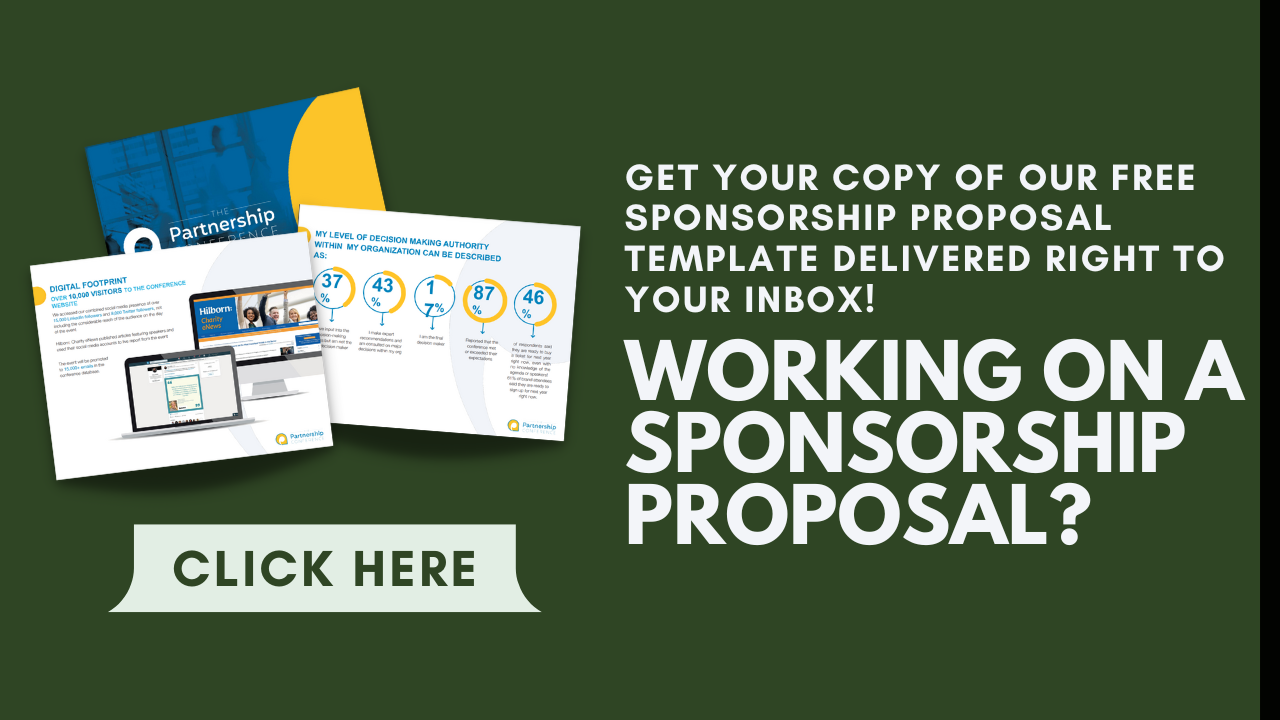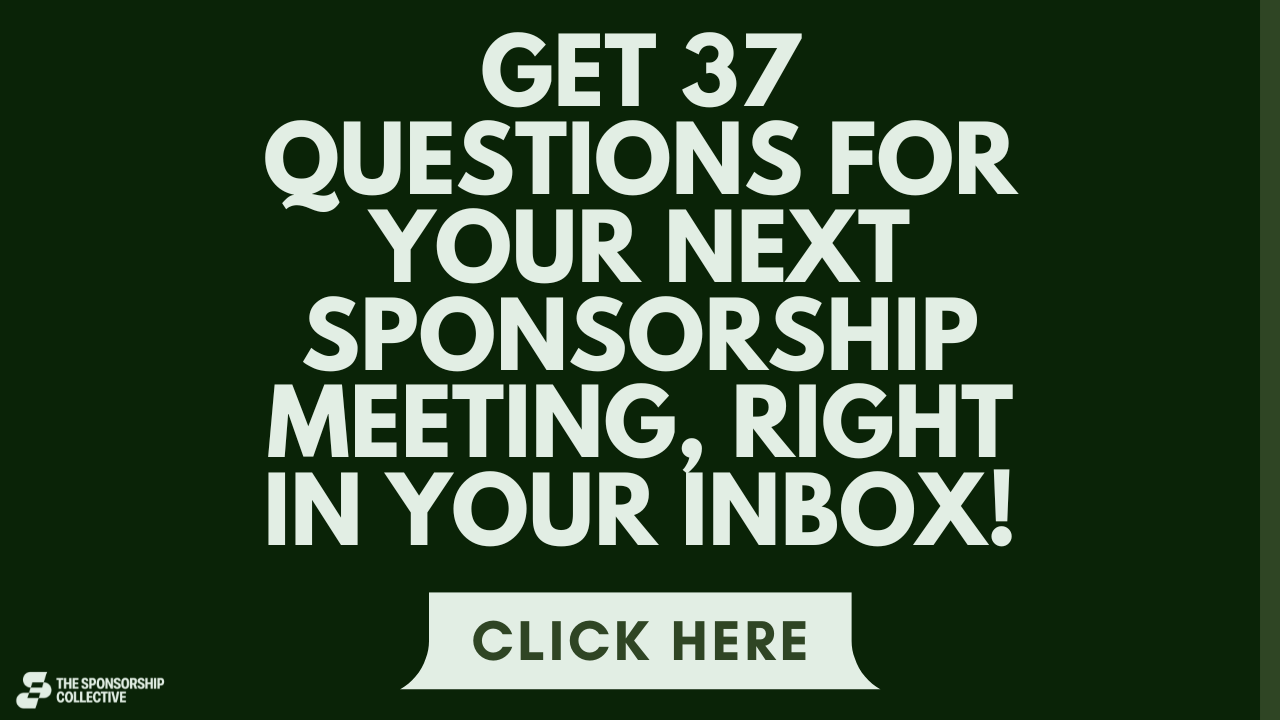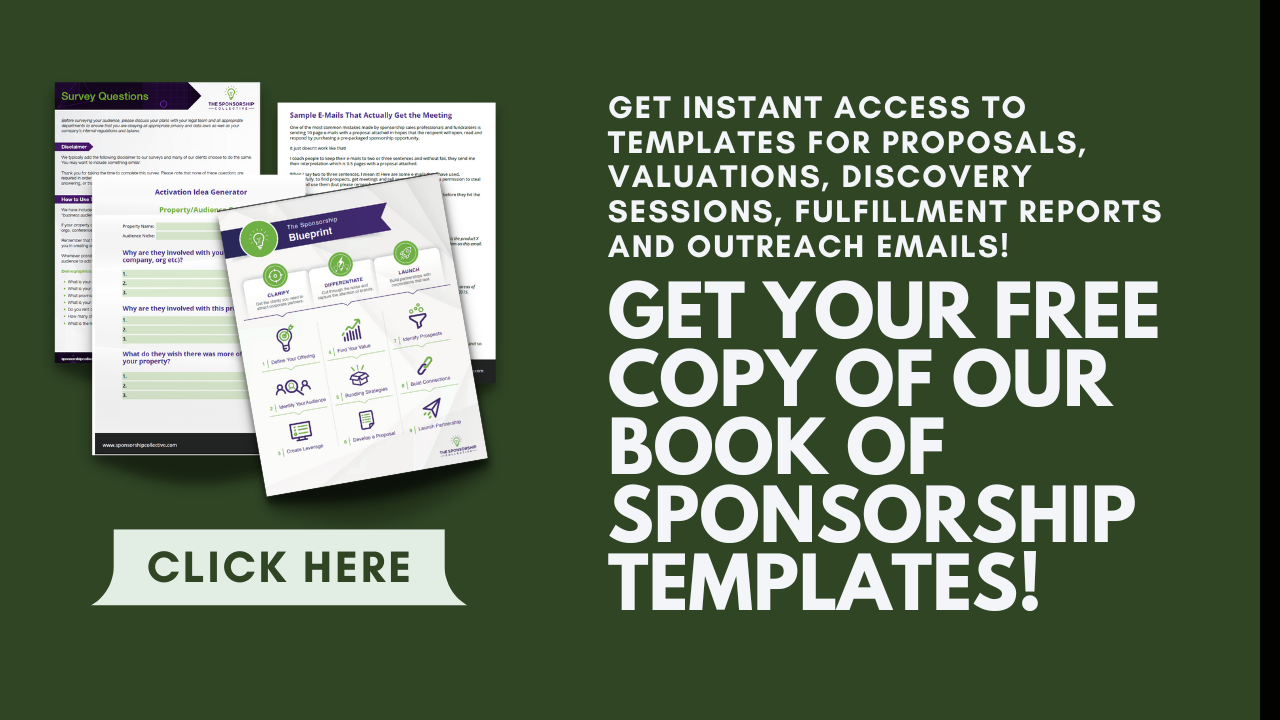Finding the right sponsorship prospects is half your battle. The other half is outreach.
You worked so hard surveying your audience and identifying the correct sponsors that you don’t want to make a mistake now. Taking the wrong outreach approach can leave you back at square one, reviewing your prospect list over and over and going down the line.
To save you time, effort, and frustration, I’ve compiled the best outreach methods so your emails don’t go unanswered and your phone calls unreturned.
8 Can’t-Miss Sponsorship Outreach Methods to Bolster Your Prospecting Strategy
Don’t Go in Cold
Cold pizza, quitting cold turkey, cold weather: most of us can take or leave cold things, and that preference should trickle down to sponsorship outreach.
Cold calling and cold emailing are strategies you can employ, but only if you absolutely must. After all, cold emails don’t exactly have the highest success rate in 2023, only earning a response rate of 8.5 percent.
I don’t know about you, but that’s too low for me. It means you’ll only get eight responses for every 100 emails you send. And 100 emails is a lot, especially when you have an event coming up and a limited time to pull your final sponsor list together.
By the way, the average success rate of cold calls is not that much higher. It’s estimated at three to 10 percent, with the former a more common figure than the latter.
Find Your Common Contact
Okay, so how do I recommend you get over your cold email blues?
It’s easy. Find someone who knows someone.
Alright, I may have made it sound easier than it seems.
This method isn’t foolproof, but if it doesn’t work, you can always fall back on cold calling or emailing. You already know that’s not ideal, but it’s there as a safety net if you need it. Hopefully, that will give you some peace of mind.
The larger the network you have, the easier it is to find someone in common at the sponsor company.
Now, when I refer to a sponsor company or–more broadly still–the sponsor, I mean a sponsorship division within a company.
While in a perfect world, you would know someone within that division, we live in an imperfect world, so you might not. However, knowing anyone who’s part of the company as a whole is fine!
You personally don’t have to know anyone. If a coworker, colleague, vendor, or partner of yours has a connection, that’s great too.
So, why does having a common connection matter?
It increases the likelihood of consideration from the sponsor. In other words, while they might have initially glossed over your email, because you know so-and-so, they feel inclined to respond to you.
I always tell my clients that that’s all it means. Having a common connection is your foot in the door. It’s up to you to step your way through it. You’re not guaranteed to get a sponsorship deal because you know someone at the company, especially indirectly.
If that was all it took, you’d have no need for my services, as finding an event sponsor (or any type of sponsor, really) would be effortless.
Get to the Decision Maker
Your goal, if you choose to accept it (and I hope you will), is to reach the decision maker.
This can sometimes be simple, especially if you have a common connection at the sponsorship company. Perhaps you know the decision maker, which is excellent. However, even if you don’t, your contact probably does or knows someone who does and can put you in touch.
Why do I suggest skipping ahead to the decision maker?
For a few reasons, actually.
For one, you only have so much time before your event. You don’t want to waste a second of it cutting through mountains of red tape as you play phone tag with the front desk receptionist. I’m sure they’re very nice and great at what they do, but it’s not a wise way to spend your time.
You also want to talk to the decision makers because well, they’re the ones who make the big calls.
When you speak to someone under them, they might agree that they can help you in a sponsorship capacity, but they have to go through their higher-up, who may have to go through their higher-up.
A decision maker isn’t always the highest person on the totem pole. They may have others over them, but there will be fewer others than non-decision makers.
That’s why prioritizing a conversation with them is best.
Know What You Want
Why are you calling or emailing the decision maker at the sponsor company in the first place? That’s simple. You want a discovery session.
The discovery session is the introductory meeting between you and the sponsorship prospect. This is your opportunity to ask smart questions that drive the data you need.
You should have already done basic research on your sponsorship prospect, but the discovery session takes it further. You can learn about the company’s marketing and advertising campaigns, current sales figures and projection, audience data, new products and services coming out, the works.
This is proprietary information you need to present tailored activations and assets to your sponsor, so you can’t forego the discovery session. Doing so is a great way to tank your potentially prosperous sponsorship arrangement.
I know it’s tough to make contact out of the blue. Even if you know a sponsorship prospect somewhat well, it’s still hard to go from cordial contacts to asking them for a meeting.
A small warmup is fine, but you shouldn’t be warming them up three or four conversations later. They only have so much time and patience, the same as you. Don’t waste either by beating around the bush.
The point of reaching out is to schedule a discovery session. I don’t recommend asking the prospect what time and day works for them. You could ping-pong messages back and forth all day trying to get an answer, and remember, no one has time for that.
Instead, propose a date and time that works for you. If the prospect agrees, great! If they don’t, they’ll suggest another date and time. Do your best to agree to that.
Make Contact
Now, it’s the moment you’ve been waiting for/dreading. You’ve got your contact in mind and know what you’re going to say.
It’s time to say it.
Unless you’re a smooth talker on the phone, I recommend sending an email. It’s easier to fine tune your message and ensure you get your point across clearly, the same which can’t be said if your nerves get the better of you on a phone call.
I’ve shared many email templates on this blog for making contact, but it’s been a while, so here’s one for you, event host, if you have a warm contact.
Hi there, [name],
It’s [your name]. I’m a colleague of [your connection’s name], who mentioned you when I brought up my latest opportunity.
My event, [name], is hosting its annual [event name] soon, and I’d love to chat with you to see if we have any common ground between our plans and goals for the year.
Are you available on Thursday at 2:45 for a quick chat? Please let me know.
Thanks, and have a great day,
[Your name]
You can tweak the above template to match your verbiage, but the crux of the message should stay the same.
You’re not going on and on about your event opportunity, which is good, because your contact doesn’t care much (sorry to break it to you). They will as you continue working together, but they don’t right this second.
You’re also not asking for sponsorship upfront, which is a no-no. You shouldn’t attach your proposal to this email. Just keep it short and simple.
Wait to Hear Back
You thought plucking up the courage to send the email was the hardest part of outreach, right? Not exactly! That would be waiting for a response back.
I know it’s tempting to refresh your inbox every 10 minutes, but that’s a waste of your time. Move on with your day, forgetting you sent the email. Check your inbox in an hour or two, but don’t sweat it if you don’t hear back immediately.
The sponsor likely has other priorities, so they will get to you.
And if they don’t? I have a strategy for that, so make sure you keep reading.
You can’t hinge all your sponsorship hopes and dreams on one company this early on. I know, that’s easier said than done when it’s a prospective six-figure deal with a major brand we’re talking about, but you must temper your expectations.
That’s exactly why you created your sponsorship prospect list, so if one of your sponsors was unavailable for any reason, you could contact the next one without losing time or falling short of your event goals.
Build in a Cadence
You’ve waited a few days, and unfortunately, nothing. Your sponsorship prospect didn’t respond to you, which has left you feeling dejected.
Do you just let it go? Not yet, no!
Instead, it’s time for a communication cadence. You sent an email on what we’ll call Day One.
Next, on Day Two, send a follow-up email. Keep the language light and airy, asking the prospect if they saw your last message but not being accusatory or pushy.
Send another email on Day Three, then call the prospect on Day Four. If you still haven’t heard anything by now, send a fourth email on Day Five, a fifth email on Day Six, and call again on Day Seven.
If you have another contact in this sponsor company, begin the cadence with them. However, if you don’t, and you haven’t heard a peep in a week (and you reached out daily), that is the sponsor’s way of saying they’re disinterested.
It’s time to move on to the next prospect on your list.
BAMFAM
BAMFAM is one of my favorite acronyms, and not because it’s so fun to say (and write). It stands for book a meeting from a meeting, a critical piece of advice once you get to the stage where you have the discovery session with your prospect.
I’m sure I’ve made it evident enough by now that your sponsors are busy people just like you are. They have different daily goals and plans, but they’re just as busy making it happen as you.
If you don’t schedule a meeting before you shake hands and walk away, the chances of you getting a second one are nil. The sponsor might agree to meet but won’t nail down anything concrete, and before you know it, they’re gone like a slippery fish after reeling in a big catch.
That’s what BAMFAM is for. It ensures you don’t lose a potentially valuable sponsorship opportunity because of scheduling conflicts.
Prospecting to Outreach
Don’t waste your time and hard effort spent prospecting for sponsors by failing to nail the outreach. Although outreach is very much dependent on how your sponsor reacts, you can do plenty to set yourself up for success.
Use your audience’s recommendations for companies and brands to pursue. Find a common contact or a decision maker. Send an initial email, but establish a cadence if you don’t hear back.
And please, use BAMFAM!
- About the Author
- Latest Posts
Chris Baylis is the Founder and Editor-in-Chief of The Sponsorship Collective.
After spending several years in the field as a sponsorship professional and consultant, Chris now spends his time working with clients to help them understand their audiences, build activations that sponsors want, apply market values to their assets and build strategies that drive sales.
Read More about Chris Baylis




